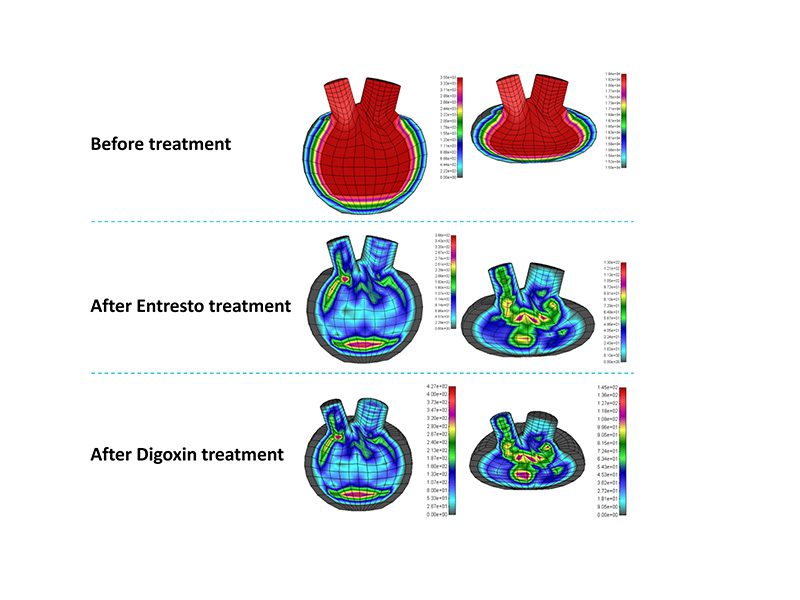
02 Jan Multiscale modeling of left ventricle
Multiscale modeling of left ventricle
In silico clinical trials are the future of medicine and virtual testing and simulation are the future of medical engineering. The use of a computational platform can reduce the costs and time required for developing new models of medical devices and drugs. The computational platform, which is one of the main results of the SILICOFCM project, was developed using state-of-the-art finite element modeling for macro simulation of fluid-structure interaction with micro modeling at the molecular level for drug interaction with the cardiac cells. SILICOFCM platform is used for risk prediction and optimal drug therapy of familial cardiomyopathy in a specific patient.
In order to obtain 3D image reconstruction, the U-net architecture was used to determine geometric parameters for the left ventricle which were extracted from the echocardiographic apical and M-mode views. A micro-mechanics cellular model which includes three kinetic processes of sarcomeric proteins interactions was developed (MP surrogate model). It allows simulation of the drugs which are divided into three major groups defined by the principal action of each drug. Fluid-solid coupling for the left ventricle was presented. A nonlinear material model of the heart wall that was developed by using constitutive curves which include the stress-strain relationship was used.
The results obtained with the parametric model of the left ventricle where Pressure-Volume (P-V) diagrams depend on the change of calcium were present. It directly affects the ejection fraction. The presented approach with the variation of the left ventricle (LV) geometry and simulations which include the influence of different parameters on the P-V diagrams are directly interlinked with drug effects on the heart function. It includes different drugs such as Entresto and Digoxin that directly affect the cardiac P-V diagrams and ejection fraction.
You can read about this in more detail in our paper: Filipovic et al. (2022), Computer Methods and Programs in Biomedicine, 227, 107194.




Sorry, the comment form is closed at this time.